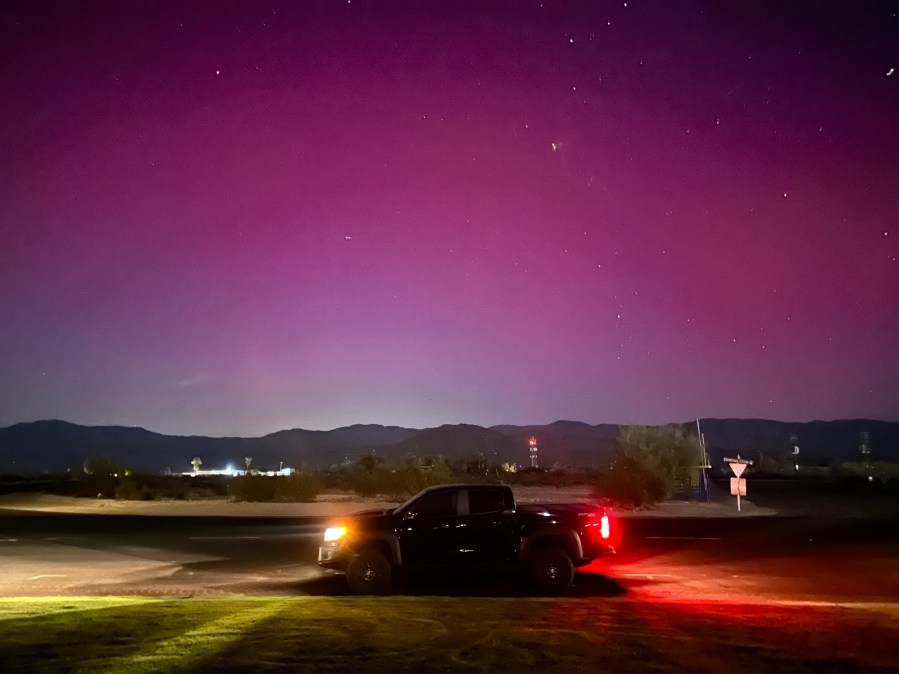A severe geomagnetic storm supercharged the northern lights Thursday evening, making the aurora borealis visible from parts of San Diego County for the second time this year.
A storm strong enough to be visible from San Diego happens when eruptions from the sun send clouds of plasma toward Earth. Those particles interact with elements in the Earth's atmosphere to create streaks of vibrant color, NBC 7 Meteorologist Brooke Martell said. When the particles interact with nitrogen, the geomagnetic storm appears red and when mixed with oxygen, they turn yellow and orange.
NBC 7 viewers lucky enough to capture the phenomenon were stationed in San Diego County mountains with cameras ready to capture the burst of colors.
"You do have to get away from that light pollution, get to a higher elevation in order to get a shot like that," Martell said. "It's difficult to see those colors with the naked eye."
Get top local stories in San Diego delivered to you every morning. Sign up for NBC San Diego's News Headlines newsletter.



The Solar Weather Prediction Center is forecasting a moderate Aurora Friday night so there is a less likely chance the northern lights will be visible again Friday evening.
Local
Martell added that strong solar flares that can impact the Earth, like this one, hadn't been seen in decades until a severe geomagnetic storm in May that also sent light streaks south to San Diego.
Solar flares can also have negative effects. Birds' migratory paths can be affected and by interrupting the Earth's magnetic field, the geomagnetic storm could impact technology like GPS and the power supply.
For May's event, NOAA issued a severe geomagnetic storm watch for the first time since 2005, NBC News reported.





